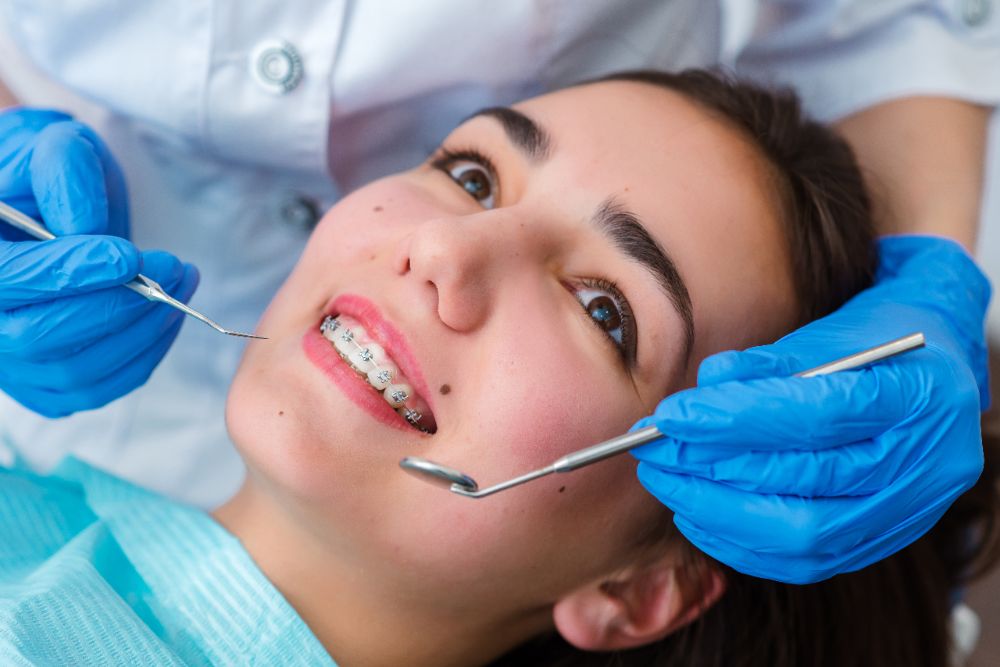Your Overview to Cumming Invisalign: Straightening Teeth with Style and Convenience
Your Overview to Cumming Invisalign: Straightening Teeth with Style and Convenience
Blog Article
Comprehensive Guide to Orthodontics Treatments for Remedying Oral Misalignments
In the realm of orthodontics, the trip to attaining a perfectly straightened smile involves a myriad of treatments tailored to remedy dental imbalances. From typical braces to invisible aligners and even surgical choices, the area of orthodontics provides a variety of remedies to resolve varying levels of dental irregularities. Recognizing the complexities of each procedure, including their systems, benefits, and possible drawbacks, is essential in making educated decisions concerning one's orthodontic treatment. As we browse via the thorough overview to orthodontic treatments for fixing oral imbalances, the intricate information of each method will unravel, losing light on the course toward a harmonious and functional dental positioning.
Orthodontic Procedures Introduction

Routine adjustments and surveillance are crucial parts of orthodontic treatment to guarantee progress is on track and to make any needed alterations along the means. By undertaking orthodontic procedures, people can not only accomplish a straighter smile yet also improve their general oral health and wellness and feature.
Standard Braces: Exactly How They Work
When thinking about orthodontic therapies for dental imbalances, typical braces stand apart as a reliable method for dealing with teeth placing. Traditional dental braces consist of brackets, wires, and bands that collaborate to use continual pressure on the teeth, gradually moving them right into the wanted placement. The brackets are connected to the teeth using an unique adhesive, and the cords are threaded via the braces. By readjusting the tension of the wires, orthodontists can control the direction and pressure applied to each tooth, leading them right into proper placement gradually.
As stress is used to the teeth via the dental braces, the bone surrounding the teeth is improved to support the brand-new tooth settings. Individuals will require normal modifications at the orthodontist's workplace to ensure the braces proceed to use the right stress for effective teeth movement.
Unnoticeable Aligners: Cons and pros
These clear, personalized trays are essentially unseen when put on, making them an appealing option for individuals seeking a more cosmetically pleasing orthodontic therapy. Individuals can eliminate the aligners prior to consuming or cleaning their teeth, minimizing the risk of food getting stuck in the home appliance and streamlining the cleansing procedure.

Surgical Orthodontic Options
Surgical interventions in orthodontics present sensible choices for addressing complex dental misalignments that might not be successfully dealt with with traditional orthodontic treatments. While unseen aligners and traditional dental braces can correct numerous orthodontic concerns, certain situations call for surgical intervention to attain optimum results. Surgical orthodontic alternatives are normally suggested for serious malocclusions, significant jaw disparities, and instances where the underlying bone structure needs adjustment to attain appropriate placement.
One typical surgical orthodontic procedure is orthognathic surgery, which involves repositioning the jaws to remedy practical concerns such as difficulty talking or eating. This surgery is often performed in cooperation with an orthodontist who helps align the teeth prior to and after the procedure. Surgical orthodontics may also entail treatments to reveal affected teeth, eliminate excess gum cells, or reshape the jawbone to produce an extra harmonious face profile.
Before taking into consideration medical orthodontic alternatives, people undergo a comprehensive evaluation to identify the requirement and prospective advantages of such treatments. cumming invisalign. While surgical procedure may seem difficult, it can significantly improve both the feature and aesthetic appeals of the smile in situations where conventional orthodontic therapies fall short
Retainers and Post-Treatment Care

Post-treatment treatment includes adhering to the orthodontist's directions diligently. This may include appropriate oral hygiene practices, attending follow-up appointments, and wearing the retainers as suggested. Failure to abide by post-treatment treatment guidelines can result in regression, where the teeth gradually relocate back towards their original placements. Constant retainer wear, excellent dental health, and normal dental check-ups are vital for preserving the outcomes attained with orthodontic surgical treatment and making certain the lasting stability of the dealt with dental positioning.
Verdict
Finally, orthodontic treatments supply different choices for correcting dental misalignments. Conventional braces utilize metal braces and cables to move teeth into appropriate positioning. Unnoticeable aligners supply an even more discreet choice but might not be suitable for all instances. Surgical orthodontic choices are available for a lot more severe misalignments. Retainers are generally utilized post-treatment to preserve the brand-new placement. Generally, orthodontic procedures can effectively improve dental wellness and visual appearance.
As we browse check here via the extensive overview to orthodontic procedures for fixing oral imbalances, the elaborate information of each method will unravel, shedding light on the path towards a functional and unified dental alignment. - invisalign
One of the most typical orthodontic therapies is the use of dental braces, which are composed of metal brackets and cables that use mild stress to progressively change teeth right into the preferred position.When taking into consideration orthodontic therapies for dental misalignments, typical braces stand out as a reliable technique for remedying teeth placing. In addition, undetectable aligners might not be ideal for intricate orthodontic concerns that need even more considerable teeth right here activity, as they are typically advised for mild to modest situations. Retainers are tailor-made orthodontic tools created to hold teeth in their fixed settings after the completion of orthodontic therapy.
Report this page